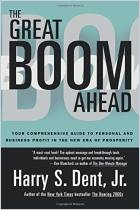Join getAbstract to access the summary!

Join getAbstract to access the summary!
David Elias
Dow 40,000
Strategies for Profiting from the Greatest Bull Market in History
McGraw-Hill, 1999
What's inside?
Good times are here to stay — at least until 2016.
Recommendation
Call David Elias an optimist. He expects the Dow Jones Industrial Average to hit 40,000 by the year 2016, and he stands by his prediction, even in the wake of the stock market downturn. His target doesn’t sound so outlandish if you consider that, in order to hit 40,000, the Dow must rise by only 9% annually in the next 16 years. (Investors already have accustomed themselves to much grander annual returns.) However, Elias, an investment adviser, might strike some readers as a bit too cheery. He says interest rates and inflation will remain low for a decade, and he predicts that the developing world will goose profits by buying ever-increasing quantities of products from U.S. companies. Elias also argues that the much-feared backlash from Baby Boomers pulling out of the market after they retire will prove a myth. While Elias’ outlook is relentlessly buoyant, getabstract recommends his information to investors and his book’s ripe conversational fodder to futurists and analysts.
Summary
About the Author
Longtime financial adviser David Elias is president and chief investment officer of Elias Asset Management. He is a frequent source for CNBC, CNN, and The Wall Street Journal. He is a contributing editor to Chief Executive magazine and a member of the national board of governors of the Money Management Institute.


















Comment on this summary